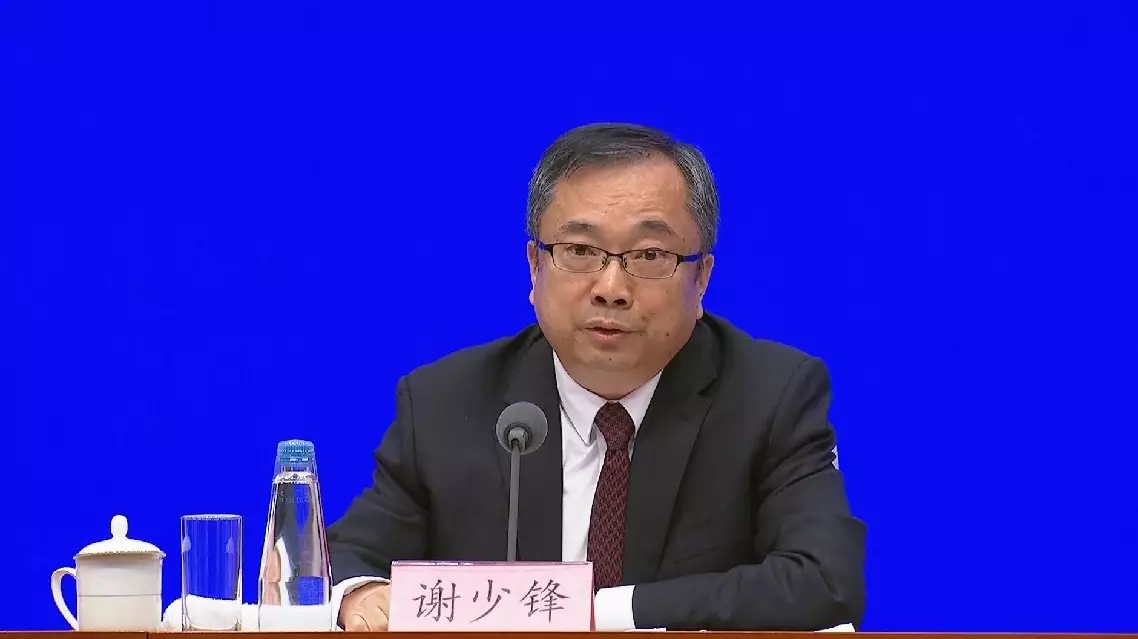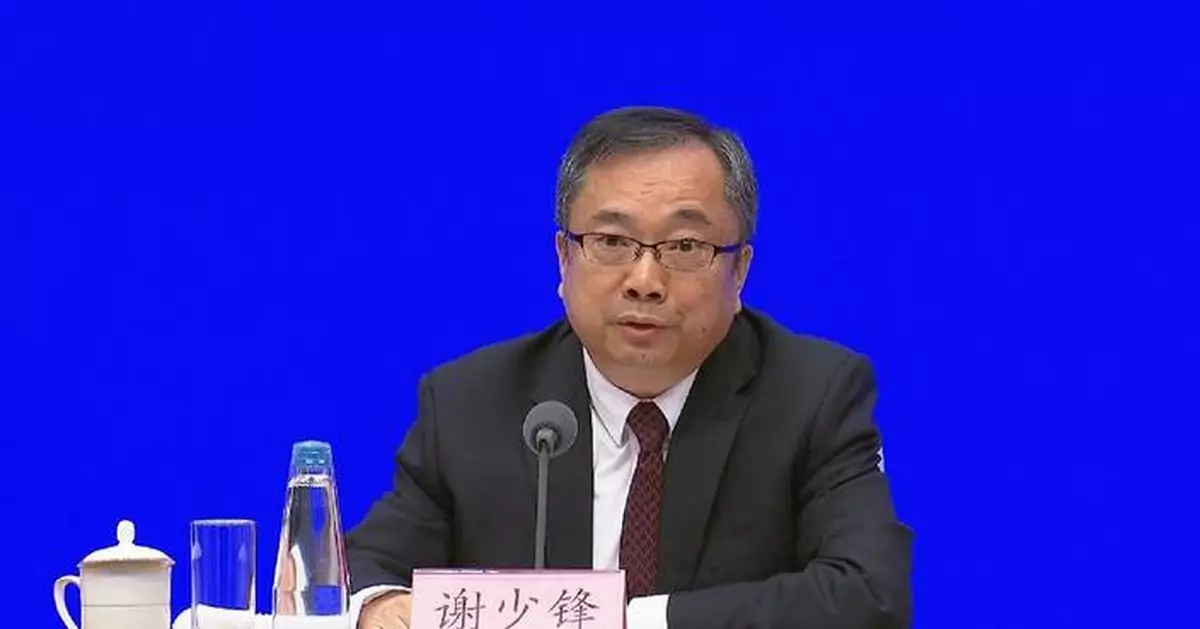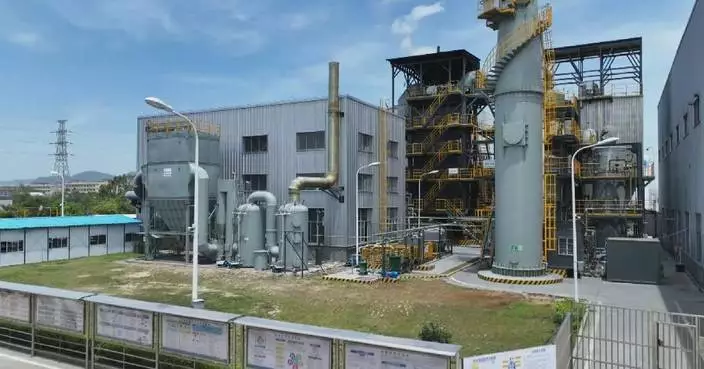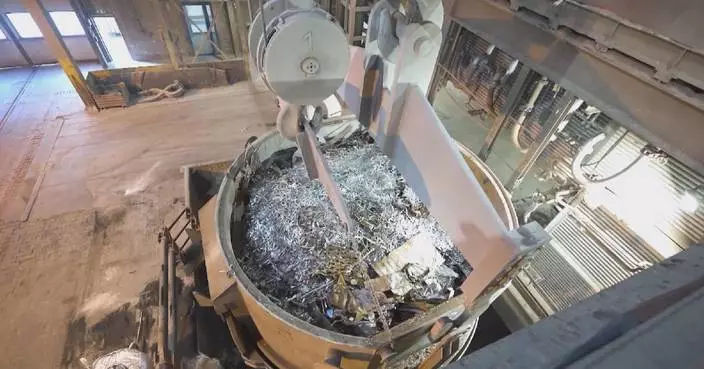China's industrial production posted strong growth in the first quarter of 2025, laying a solid foundation for achieving the annual economic goal, according to a Chinese official on Friday.
At a press conference in Beijing, Xie Shaofeng, chief engineer of China's Ministry of Industry and Information Technology, briefed the media on the overall performance of China's industrial production in the first three months.
"In the first quarter, the added value of industrial enterprises above designated size increased by 6.5 percent year on year. The equipment manufacturing industry developed well, with the electronics, automobile, electrical machinery and equipment sectors playing a prominent role in driving growth. During this period of time, the contribution rate of industry to macroeconomic growth reached 36.3 percent. Industrial private investment remained rising by double digit, along with boosted corporate expectations, improved efficiency and increasing number of industrial enterprises above designated size. China's manufacturing purchasing managers' index, aka PMI, has expanded for two consecutive months," said Xie.
Then he highlighted the efforts that the country has put into technological and industrial innovation, which has promoted the high-end, intelligent and green development, as well as strengthened endogenous driving forces for industrial transformation and upgrading.
For example, increasing deployment of autonomous AI large models in key industrial sectors, more breakthroughs in AI+ products, and wider usage of smart terminal products.
He also introduced the sound development of China's digital industry.
"Digital technologies represented by 5G and AI large models are developing rapidly. In the first two months, the business revenue of the digital industry increased by 8.2 percent year on year. The capacity of network infrastructure has been continuously enhancing. As of the end of March, a total of 4.395 million 5G base stations have been built and put into operation," Xie noted.

China's industrial production grows at faster pace in Q1

China's industrial production grows at faster pace in Q1
The Yangtze River has seen sustained restoration of aquatic biodiversity since the implementation of a fishing ban, with concrete policies and measures leading to phased achievements, according to the Chinese Ministry of Agriculture and Rural Affairs.
China started to implement the fishing ban in the Yangtze River Basin in 2021 to accelerate the ecological restoration of its aquatic biodiversity and water environment.
Over the past four years, the Ministry of Agriculture and Rural Affairs has been actively rescued flagship species in the Yangtze River, including Chinese sturgeon, Yangtze finless porpoise and Yangtze sturgeon, leading to the continuous recovery of aquatic biodiversity.
"Monitoring data showed that, from 2021 to 2024, a total of 344 native fish species were recorded in the Yangtze River basin -- 36 more species than during the pre-fishing ban period from 2017 to 2020. The aquatic biological integrity index in key water areas of the Yangtze River has shown significant improvement," said Yi Yanrong, deputy director of the Yangtze River Basin Fishery Supervision and Management Office of the Ministry of Agriculture and Rural Affairs.
Meanwhile, the resettlement and support policies for fishermen who have retired from fishing have been effectively implemented.
A total of 145,000 the retired fishermen with the ability and willingness to work have been reemployed, while 220,000 eligible retired fishermen have been enrolled in basic pension insurance, with 12,000 fishermen facing livelihood difficulties included in the subsistence allowance system.
Over the past four years, the Ministry of Agriculture and Rural Affairs, in collaboration with the Ministry of Public Security and the State Administration for Market Regulation, has strictly cracked down on illegal fishing, maintaining overall stability in fishing ban management.
The latest data showed that in 2024, the number of administrative cases related to fishing dropped by 24.7 percent year on year, and in the first quarter of 2025, it decreased by 3.3 percent year on year. The law enforcement and management of relevant authorities have maintained a strong deterrent and high pressure on such cases, effectively curbing general illegal and non-compliant activities.
However, as fishery resources gradually recover, the lure of illegal fishing profits has increased. Criminal gang activities have started to rise, and the underground industry chain of "catching, transporting and selling" has become more concealed.
"We will work together with the Ministry of Public Security and the State Administration for Market Regulation to focus on investigating and cracking down on organized, large-scale and chain-like illegal criminal groups, resolutely cutting off the underground industry chain of illegal catching, transporting and selling [of Yangtze River fish]. We will strengthen law enforcement capacity building, actively promote reward-based reporting systems, improve public participation in crime prevention and control, standardize the management of angling activities by combining regulation and guidance, and carry out the cleanup and rectification of prohibited fishing gear, further eliminate risks and hidden dangers in the fishing industry," said Yi.

Yangtze River sees continuous aquatic biodiversity recovery since fishing ban
























































